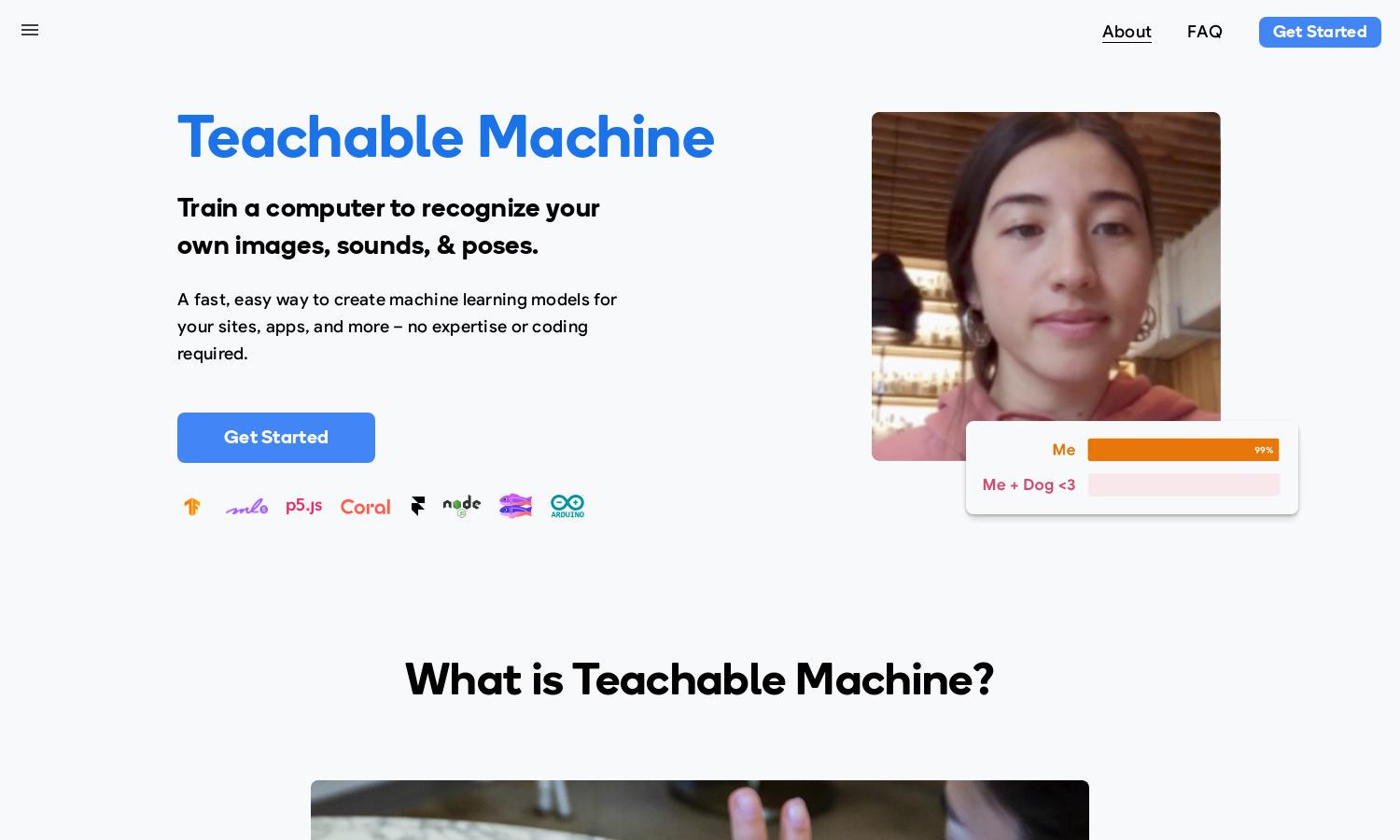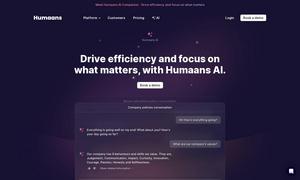Teachable Machine

About Teachable Machine
Teachable Machine is designed to make machine learning accessible to everyone, allowing users to train models to recognize images, sounds, and poses without any coding experience. Its innovative web-based interface streamlines the training process, providing valuable resources for educators, students, and creators.
Teachable Machine offers free access with no subscription tiers, providing all users with equal features. Users can also benefit from additional resources and tutorials to enhance their learning experience and effectively harness the power of machine learning through practical applications.
Teachable Machine features a clean, intuitive interface that ensures a seamless user experience. Its layout simplifies navigation through the training process, making it easy for users to group examples, train their models, and export results efficiently, making machine learning approachable.
How Teachable Machine works
Users start by gathering examples of images, sounds, or poses they want the model to learn. With a simple drag-and-drop interface, they categorize these examples into classes. Then they train the model and instantly test its accuracy before exporting it for use in projects like websites or apps.
Key Features for Teachable Machine
User-Friendly Model Training
Teachable Machine's user-friendly model training allows anyone to create machine learning models effortlessly. Users can upload files or capture examples live, categorizing them easily. This unique approach empowers beginners, educators, and creators alike to explore machine learning without technical barriers.
Real-time Testing
Teachable Machine features real-time testing, enabling users to instantly evaluate their trained models. This immediate feedback loop allows for quick adjustments and improvements, enhancing the learning experience and ensuring models accurately classify inputs, making experimentation both effective and enjoyable.
Flexible Export Options
Teachable Machine provides flexible export options, allowing models to be downloaded or hosted online. This functionality supports various applications, from building websites to integrating with Arduino projects, ensuring users can easily implement their machine learning models into real-world scenarios.
You may also like:








